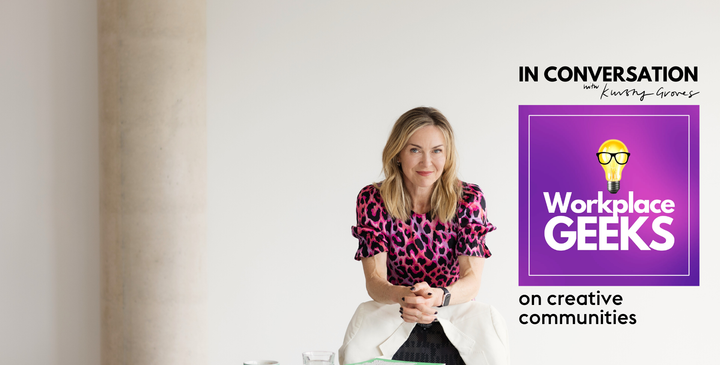Summary
Sue Glew joins Kursty to discuss how she’s changing the work environment affecting 52,000 people with a 200 person team after realizing that BT has too many offices. They talk about how the physical workplace environment can influence productivity, why there shouldn’t be a standard way to implement hybrid working, and how BT adapted to COVID-19.
Sue Glew is the head of the Better Workplace program at BT. She specializes in change management and HR transformations.
“Someone once said to me: do any kind of change ever, but don’t mess with people’s desks... and here we are messing about with 52,000 of them”
Support the show
Timestamps
[00:28] Episode overview: Growing an animation studio in the pandemic.
[02:13] How (and why) BT decided that it is better to have FEWER offices.
[03:43] A vision statement for creating better physical workspaces.
[05:48]Enabling key workplace experiences by changing office design.
[10:23] How to run an office where nobody owns a desk.
[13:38] How BT acted when COVID hit.
[16:34] Why going back to the office will be more challenging than transferring to remote work.
[18:33] What is smart working? (experimenting after COVID)
[22:43] Why it is ok for autonomy in the workplace to be confusing (and not standardized).
[25:40] Multitasking in the hybrid working world.
[29:11] What Sue Glew is most excited about!
4 Key Highlights
- Moments that matter in the workplace (that you might not think of immediately): being welcomed into the office, solo focus time, collaboration time, and moments of relaxation and refuelling. When redesigning workspaces, it is important to take these significant moments into deep consideration. Great workspaces are key to retaining the best talent.
- People need to feel at home in the workplace. This is why, even in highly collaborative workplaces where no desk spaces are assigned - it is important for people to be able to find each other. One way around this challenge is to have ‘neighbourhoods’ for every team. So, you roughly know where you can find someone when you need them.
- People adjusted to work from home very rapidly because they had no choice. However, going back to the office will likely be a lot more challenging.
- Autonomy in the workplace does not have to look the same for every team in the same company. People have different working styles and personalities. It is best to leave it up to every individual team to decide how autonomy looks for them.
Links
Connect with Sue Glew: LinkedIn | Website
Connect with Kursty Groves: LinkedIn | Twitter
Follow The Office Chronicles Linkedin page for more information, to share an idea for an episode or start a conversation around any f the topics covered in the show.


